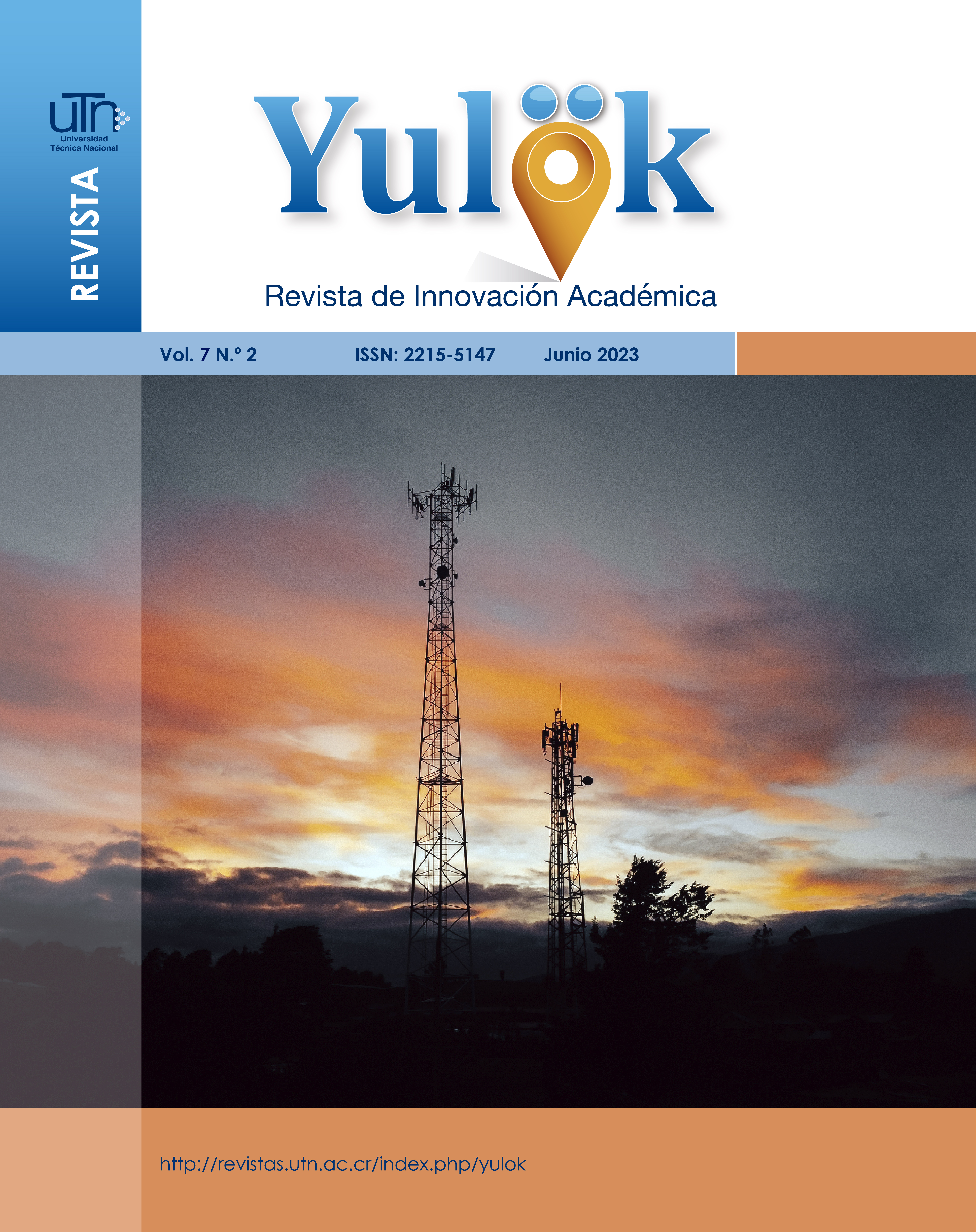Assessment of sewage sludge co-composted with coffee pulp to take advantage in Costa Rica
Main Article Content
Abstract
In order to make use of sewage sludge in Costa Rica and to carry out the first co-composting of its kind in the country, a 150-day co-composting trial was carried out in the province of Heredia. Objective: to compare the treatment of a mixture of sewage sludge with two types of structuring agents, with and without coffee pulp, evaluating the differences in the process and the quality of the final product. Methodology: The treatments with aerobic aerated piles consisted of three control piles composting sewage sludge and shredded pruning remains as structuring material (T, % v/v 35% sewage sludge and 65% structuring material) and three piles with a co-composting treatment with coffee pulp (PL, % v/v 25% sewage sludge, structuring material with 35% coffee pulp and 40% shredded pruning remains), created with an approximate volume of 3 m3; These were subjected to physicochemical (T, %H, pH, metals), microbiological (fecal coliforms, salmonella and helminths), maturity and stability tests. Results: Show that both treatments achieve a stable biosolid for subsequent agricultural use. The co-composting of sewage sludge mixed with coffee pulp meets quality parameters for use as amendments, being classified as class A according to U.S.EPA parameters, with no difference found in the statistical analysis when comparing the evolution of the process and the quality of the final product between treatments (T and PL).
Article Details

This work is licensed under a Creative Commons Attribution-NonCommercial-ShareAlike 4.0 International License.
Todos los artículos publicados están protegidos con la licencia Creative Commons Atribución-NoComercial-CompartirIgual 4.0 Internacional
![]()
How to Cite
References
Baird, R., & Bridgewater, L. (2017). Standard methods for the examination of water and wastewater. 23rd ed. Washington, D.C.: American Public Health Association.
Busquets, A., Turet , J., & Barrena, R. (2011). Respirometric screening of several types of manure and mixtures intended composting for composting. Bioresource Technology, 102, 1367-1377. doi:doi:10.1016/j.biortech.2010.09.011
Gobierno de la República de Argentina (2018). Norma técnica para el manejo sustentable de barros y biosólidos generados en plantas depuradoras de efluentes líquidos cloacales y mixtos cloacales-industriales.
Gobierno de la República de Costa Rica (2015). Reglamento para el Manejo y Disposición Final de Lodos y Biosólidos N° 39316-S. Recuperado de http://www.pgrweb.go.cr/scij/Busqueda/Normativa/Normas/nrm_texto_completo.aspx?param1=NRTC&nValor1=1&nValor2=80715&nValor3=102487&strTipM=TC
Gobierno de la República de Costa Rica (2016). Reglamento Técnico RTCR 485:2016 Sustancias Químicas, Fertilizantes y Enmiendas para uso agrícola, tolerancias y límites permitidos para la concentración de los elementos contaminantes N° 39994-MAG. Recuperado de http://www.pgrweb.go.cr/scij/Busqueda/Normativa/Normas/nrm_texto_completo.aspx?param1=NRTC&nValor1=1&nValor2=83141&nValor3=106622&strTipM=TC
Graedel, T., & Allenby, B. (2010). Industrial Ecology and Sustainable Engineering. Pearson.
Hafner, G., San Martín, M., & Reiser, M. (2018). Proyecto de Apoyo a la NAMA Café Bajo en Emisiones Costa Rica. GIZ. Stuttgart: GIZ.
Haug, R., 1995. Practical Handbook of Compost Engineering. Lewis Publishers, Boca Raton, FL.
Himanen, M., & Hänninen, K. (2011). Composting of bio-waste aerobic and anaerobic sludges-effect of feedstock on the process and quality of compost. Bioresource Technology, 2842-2852.
Kone, D., Cofie, O., Zurbrugg, C., Gallizzia, K., Moser, D., Drescher, S., & Strauss, M. (2007). Helminth eggs inactivation efficiency by faecal sludge dewatering and co-composting in tropical climates. Water Research, 41, 9397-4402. doi:10.1016/j.watres.2007.06.024
Mazzarino, M. & Kowaljow, E. (2007). Soil restoration in semiarid Patagonia: Chemical and biological response to different compost quality. Soil biology & biochemistry, 39(7), 1580-1588.
Lavado, R. S. 2012. Origen del compost, proceso de compostaje y potencialidad de uso. Pag 3-12 en M. J. Mazzarino y P. Satti, editoras. Compostaje en la Argentina: Experiencias de producción, calidad y uso. UNRN- Orientación Gráfica Editora, Buenos Aires.
Li, G., Sun, Y., Zhang, F., Wong, J., & Fang, M. (2001). Chemical evaluation of sewage sludge composting as a mature indicator for composting process. Water, Air, and Soil Pollution, 132: 333-345.
Mazzarino, M. J. & Satti, P. (2012). Compostaje en la Argentina: experiencias en producción, calidad y uso. Editorial UNRN & Orientación Gráfica Editora.
Mazzarino, M., Roselli, L., Satti, P. & Crego, M. (2015). Técnicas para análisis de compost (p. 25). Universidad Nacional del Comahue.
Metcalf & Eddy. (2014). Wastewater Engineering: Tratamiento y recuperación de recursos (Vol. 5th Ed.). (AECOM, Ed.) New York, USA: Mc Graw Hill.
OMS, & ONU. (2018). a. Progresos en el tratamiento y el uso de las aguas residuales de manera adecuada: Prueba piloto de la metodología de monitoreo y primeras constataciones sobre el indicador 6.3.1 de los ODS. ONU-HABITAT. Ginebra: ONU. Recuperado de http://apps.who.int/iris.
ONU. (2006). Global Atlas of Wastewater Sludge and Biosolids Use and Disposal: Mpving forward the sustainable and welcome uses of a global resource. (Second ed.). (ONU, Ed.) Moncton, Canada: ON-HABITAT.
Programa Estado Nación. (2018). Informe Estado de la Nación en Desarrollo Humano Sostenible 2017. ConsejPEo Nacional de Rectores. San José: CONARE. Recuperado de https://estadonacion.or.cr/informes/
Ramalho, R. (2016). Tratamiento de Aguas Residuales. Barcelona, España: Editorial Reverté.
Riera, N. (2019). Evaluación del manejo de residuos porcinos de un sistema intensivo y semi-intensivo. Su caracterización, estabilización y aplicación de efluente y compost sobre la matriz suelo y planta. [Tesis de doctorado inédita]. Facultad de Agronomía de la Universidad de Buenos Aires, Buenos Aires: UBA.
Rizzo, P. F. (2020). Análisis integral para el manejo del guano de aves ponedoras: caracterización, bioestabilización y valorización de los productos generados. [Tesis de doctorado inédita]. Facultad de Agronomía de la Universidad de Buenos Aires, Buenos Aires: UBA.
Román , P., Pantoja, A., & Martinez, M. (2013). Manual de compostaje del agricultor: Experiencias en América Latina. Santiago, Chile: FAO. Recuperado de http://www.fao.org/3/a-i3388s.pdf
TMECC, Test Methods for the Examination of Composting and Compost. 2002. USDA and U.S. Composting Council.
Tognetti, C., Mazzarino, M.J. & Laos, F. (2007). Improving the Quality of Municipal Organic Waste Compost. Bioresource Technology, 98, 1067-1076. http://dx.doi.org/10.1016/j.biortech.2006.04.025

